Health and Safety is a top priority in the workplace, and this health and safety includes safety signs. In fact there is even a health and safety (safety sign and signals) regulation, 1996. This means that by law your business should have the relevant safety signs where necessary. But how do you know which safety signs you need, well here at The Sign Maker we thought we would try and make that a bit easier for you by making an easy guide to understanding safety signs and where/why you need them.
So what are the regulations?
According to the 1996 act, regulations require employers to ensure that safety signs are provided and maintained in circumstances where the sign will help to reduce a risk. Employers can easily identify health and safety around a workplace by following three simple steps;
Step 1: identify hazards
Step 2: identify the risks with those hazards
Step 3: take actions to control/reduce/eliminate those risks
The 1996 act does however identify that safety signs should not be a substitute for other means of controlling risk but should supplement other methods.
What are the types of safety signs?
There are large amounts of different safety signs which means it can get very confusing, so here at The Sign Maker we have split it into two categories; safety signs and fire health and safety signs. Today we are focusing on the different types of signs within the safety sign category. The types include;
Prohibition signs
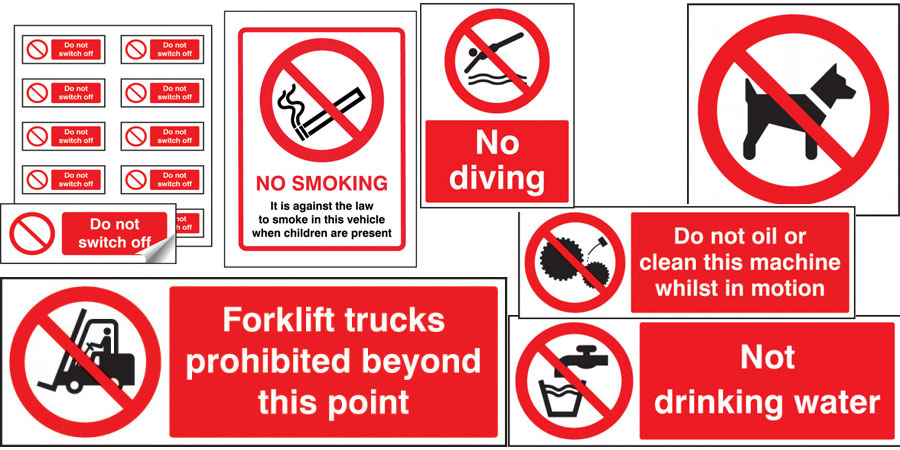
Warning signs
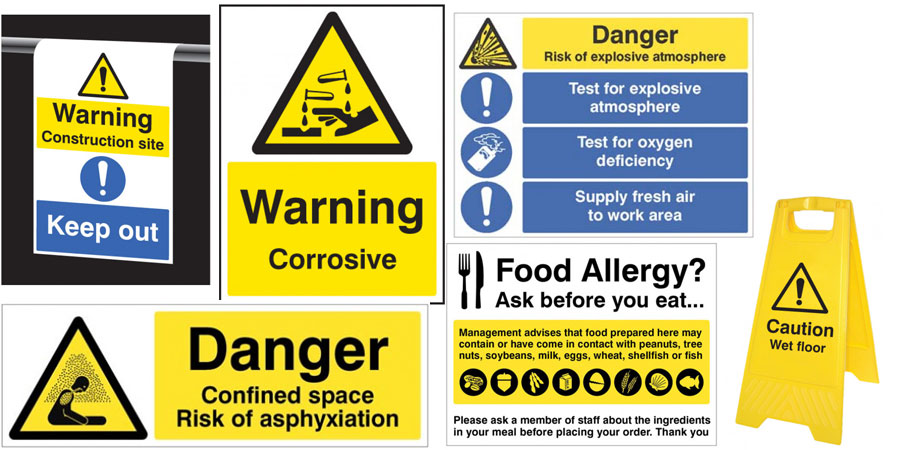
Mandatory signs
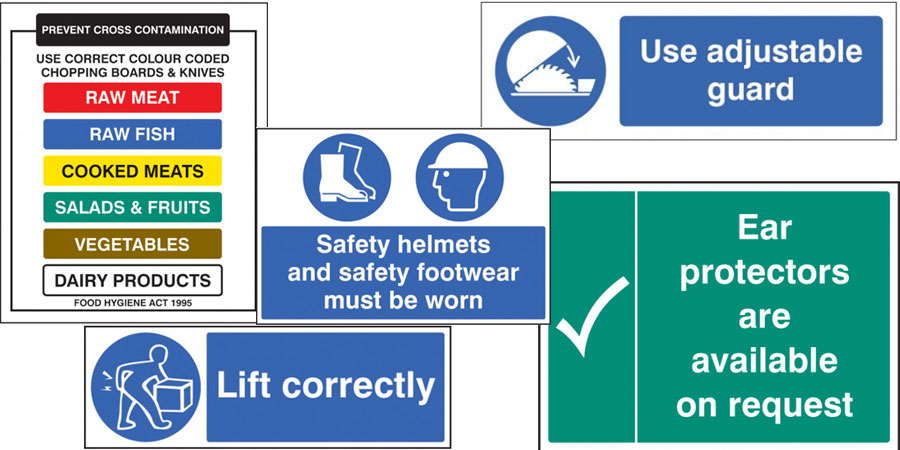
Emergency escape or first aid signs
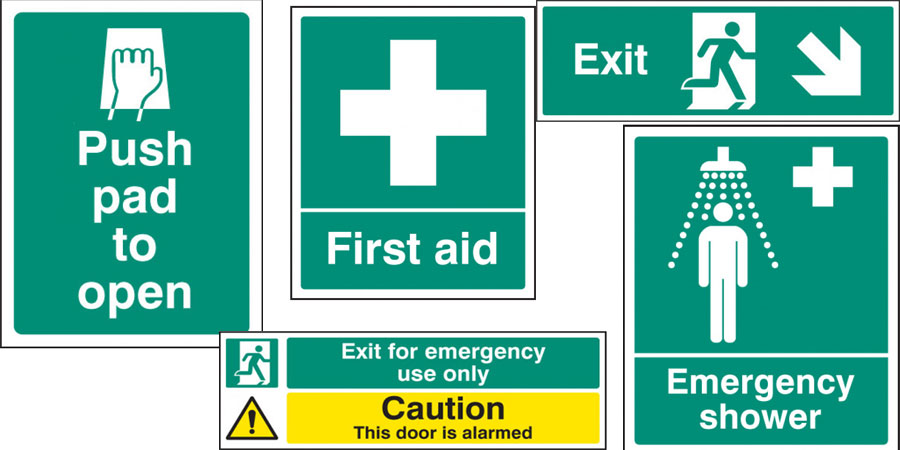
GHS hazards signs
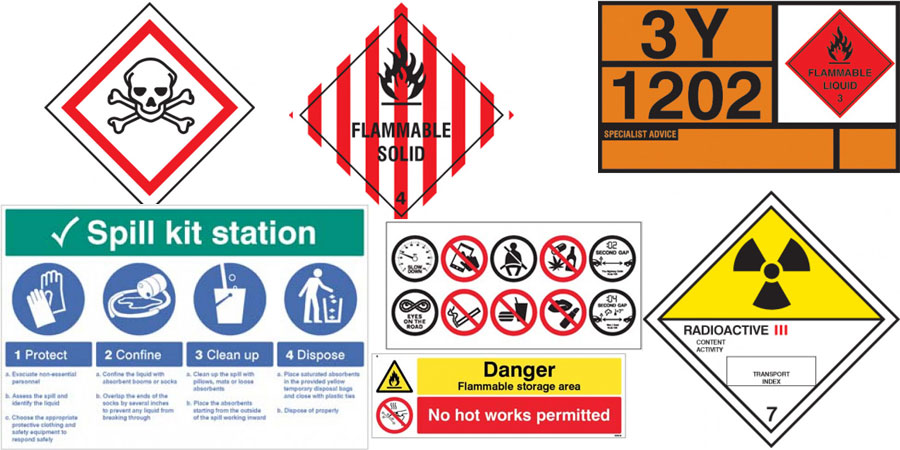
Supplementary signs
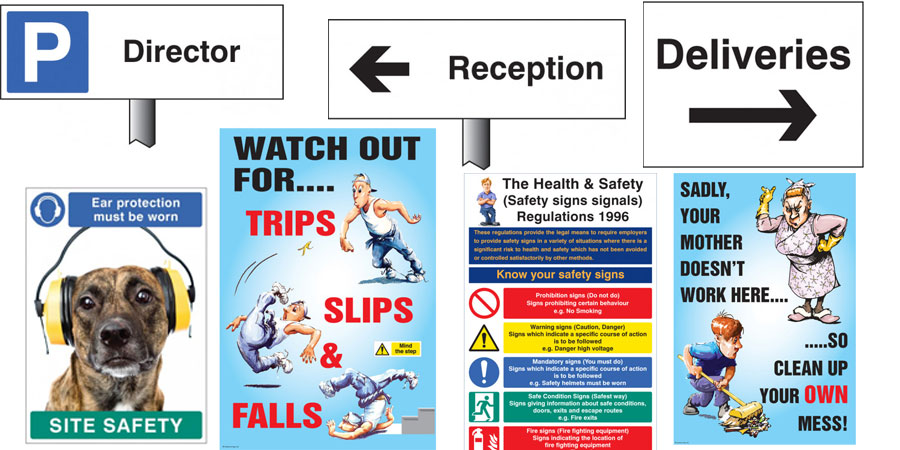
General rules on use
The first rule of use which may be helpful is that different colours mean different things, see the table below that helps you to pick what colour your safety sign should be or why it is that colour.
| Colour | Meaning or Purpose | Instruction and information |
| Red | Prohibition sign
Danger/alarm |
Dangerous behaviour; stop, shutdown; emergency cut-out devices; evacuate |
| Yellow/Amber | Warning sign | Be careful; take precautions; examine |
| Blue | Mandatory sign | Specific behaviour or action, e.g wear protective equipment |
| Green | Emergency escape
First-aid sign |
Doors; exits; escape routes; equipment and facilities; return to normal |
The second rule of use is that you need to include safety signs when hearing or sight of an employee is impaired, here at The Sign Maker we have a whole range of braille safety signs just for this purpose.
The final rule of use is in regards to the maintenance of these signs. All the safety signs must be properly maintained so they are capable of performing the function for which they are indented.
So now you know all that you may be thinking that your workplace needs a little updating, if so feel free to give us a call or email us to chat through options or just to gain some more information.
T: 01769561355
E: sales.sign-maker.net

